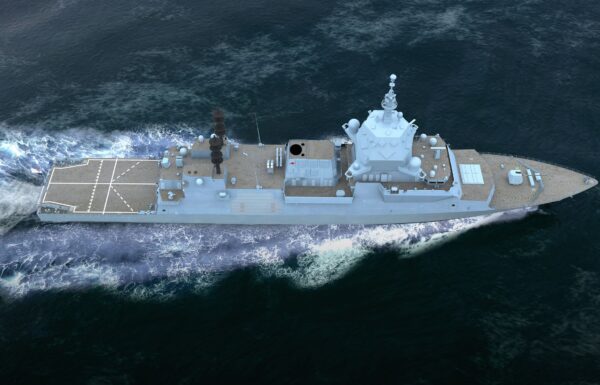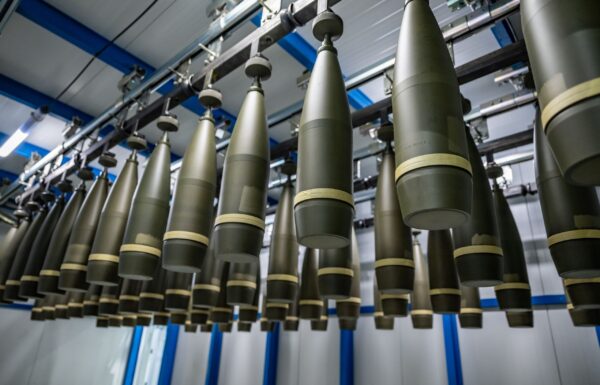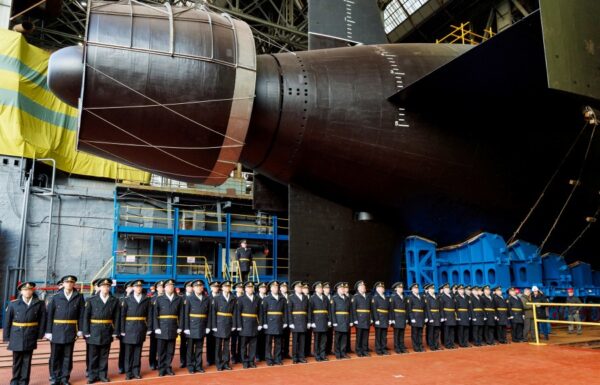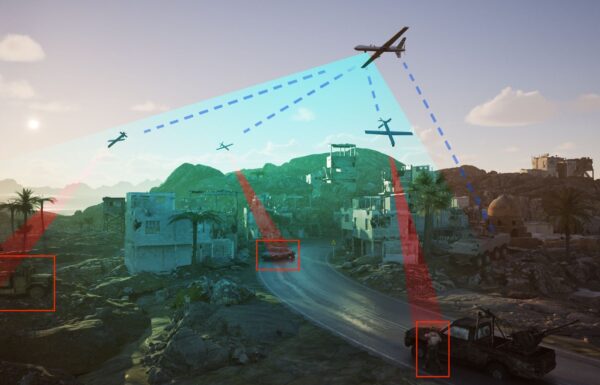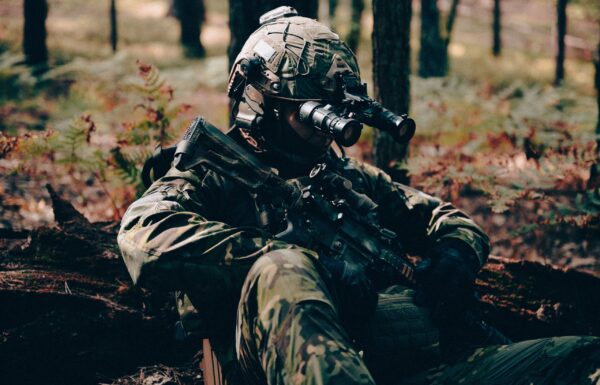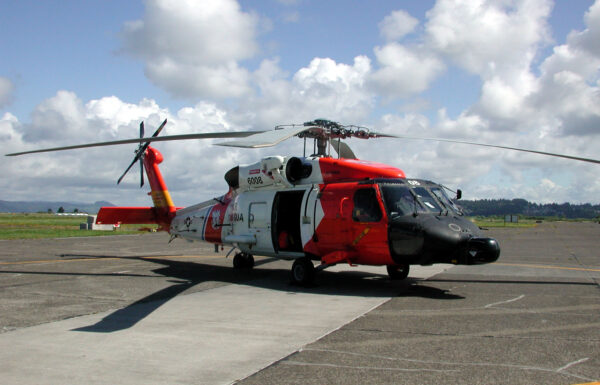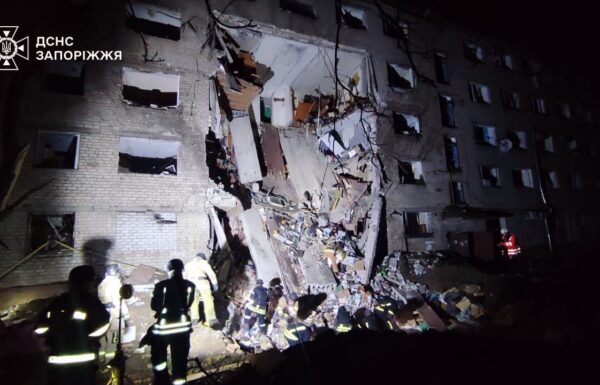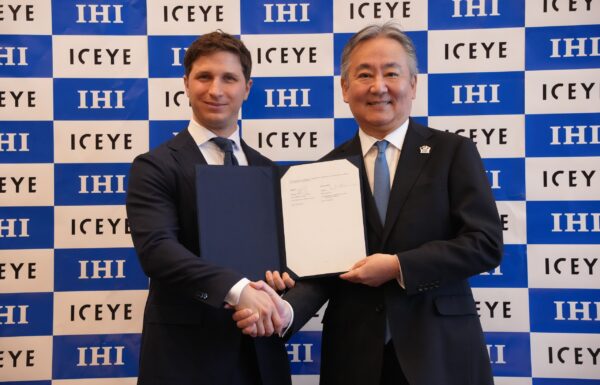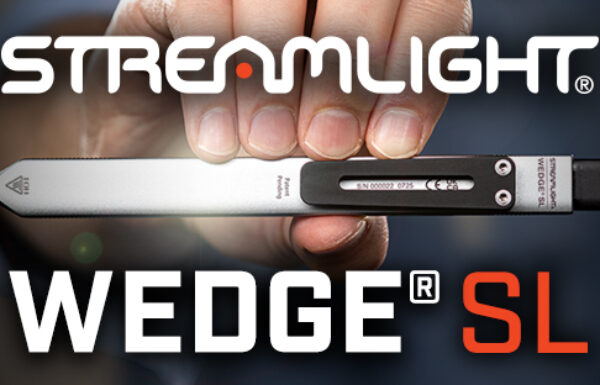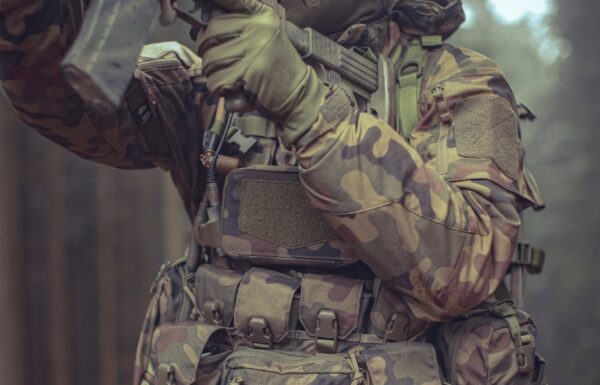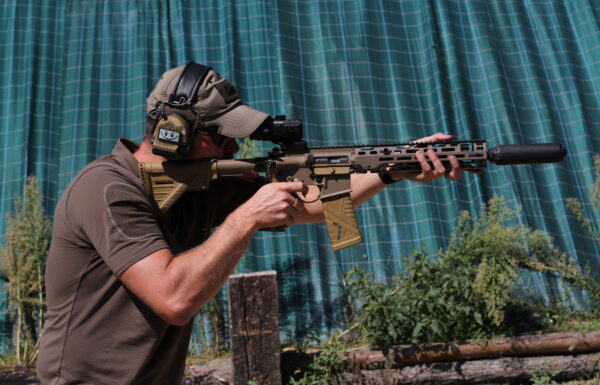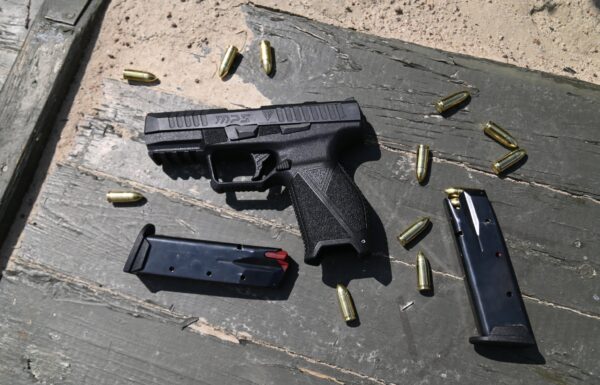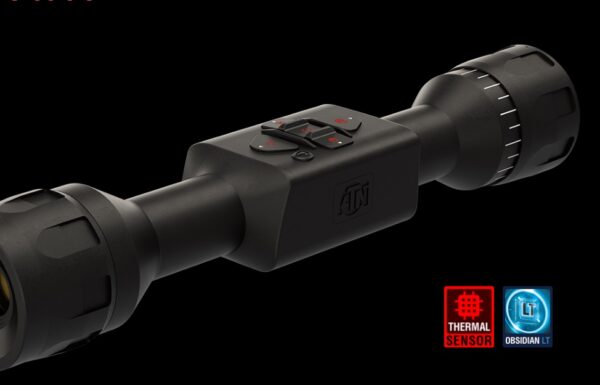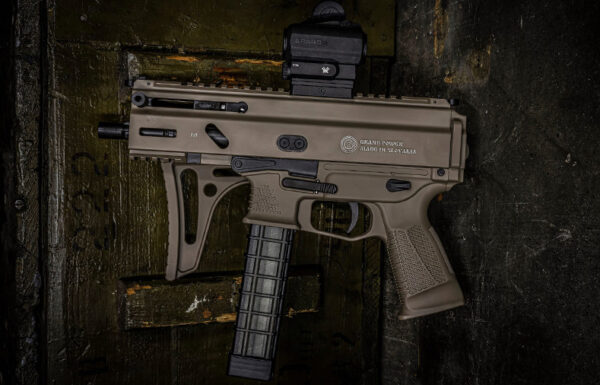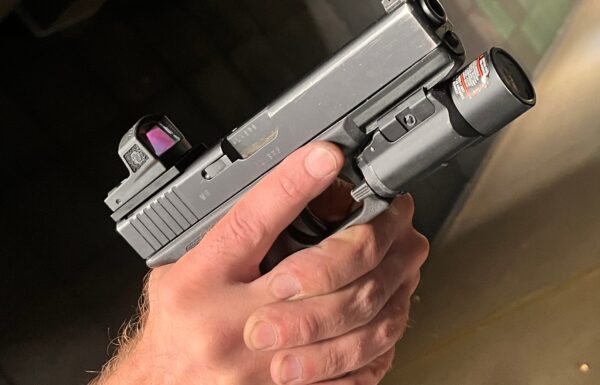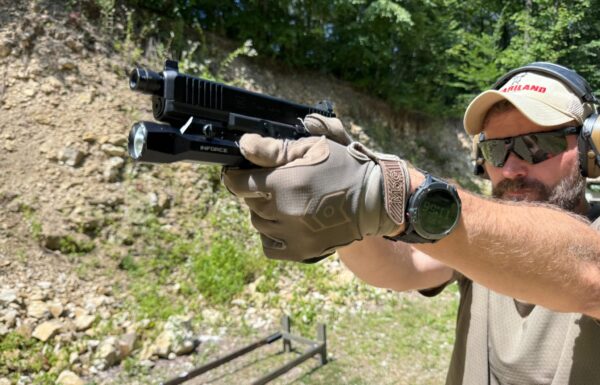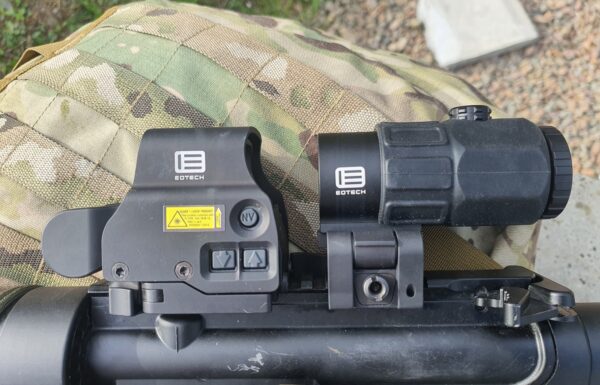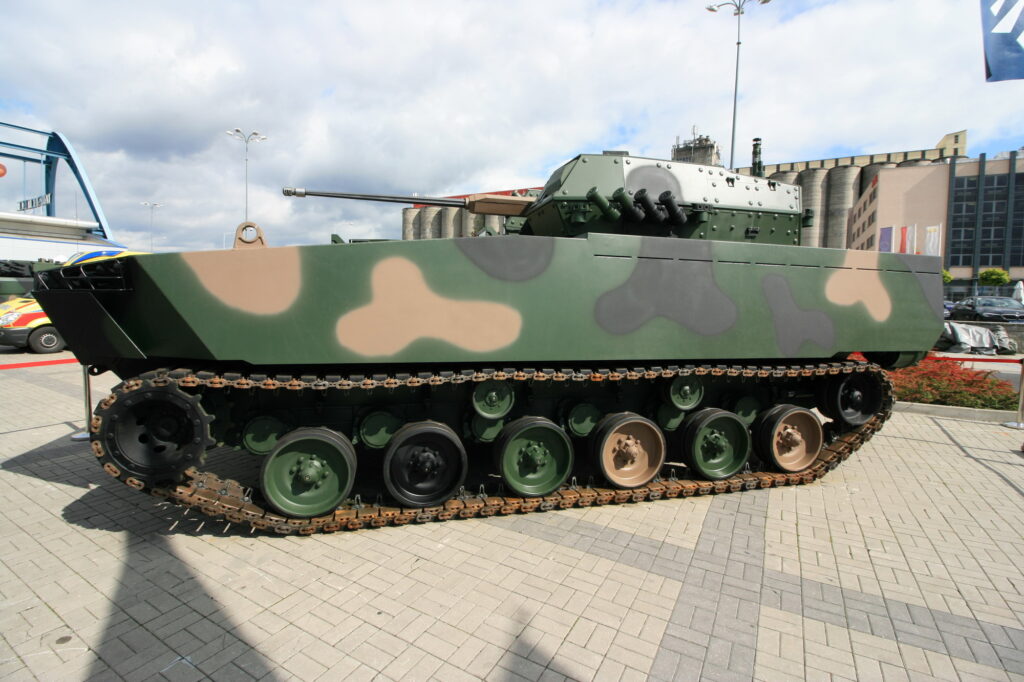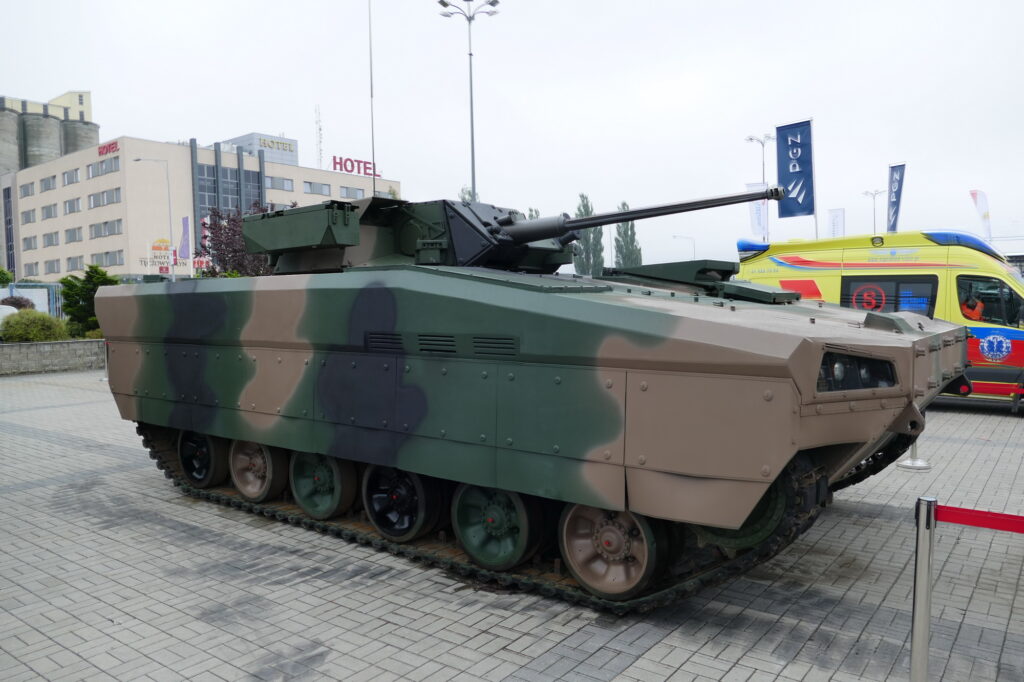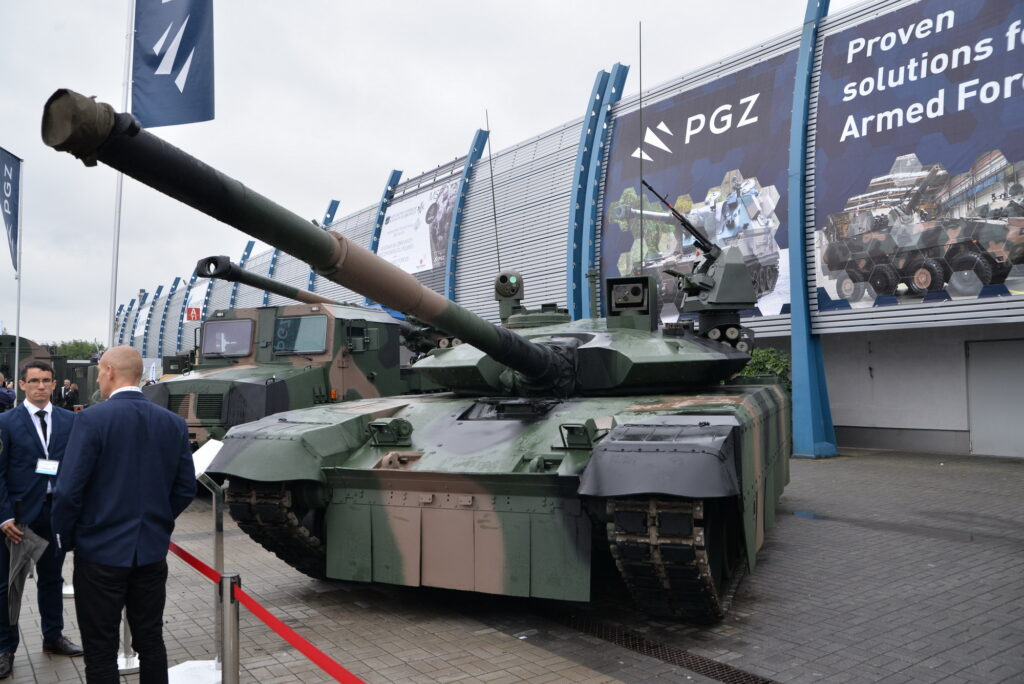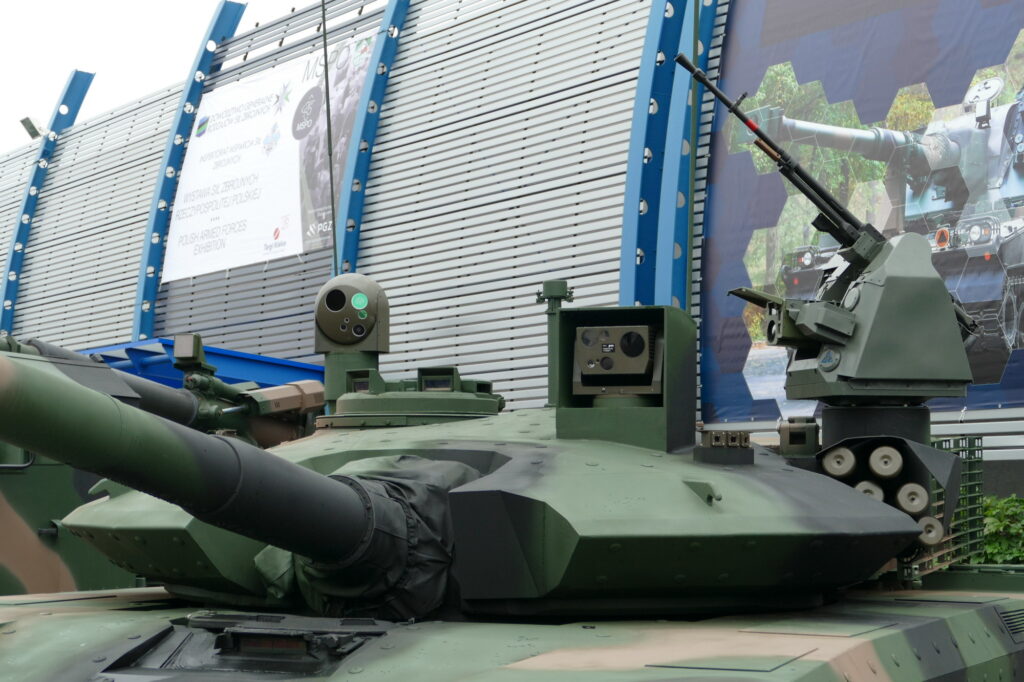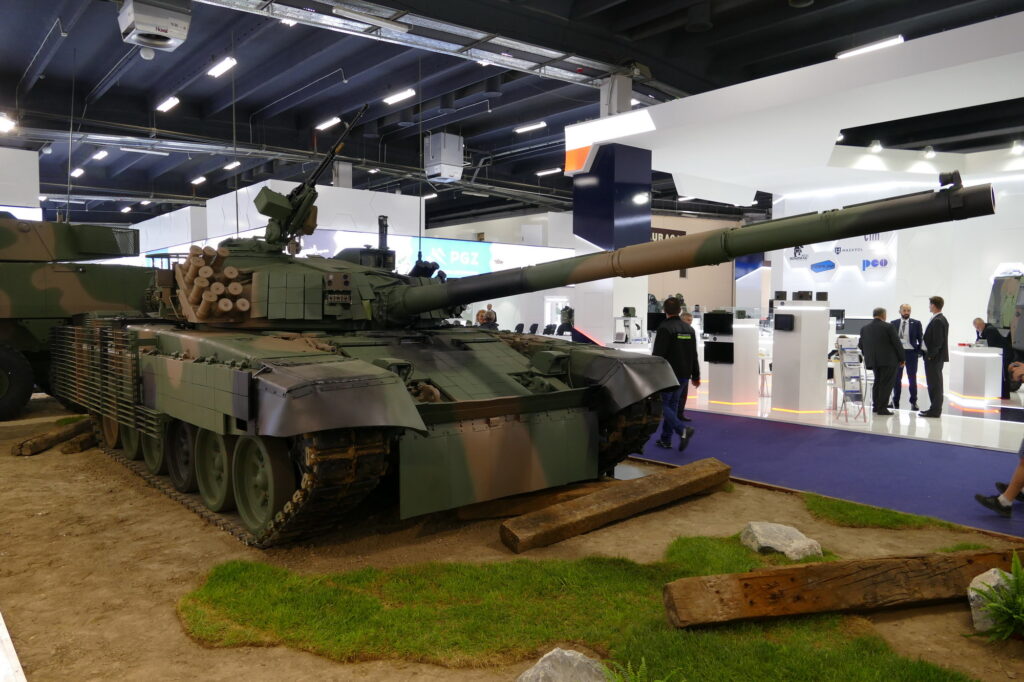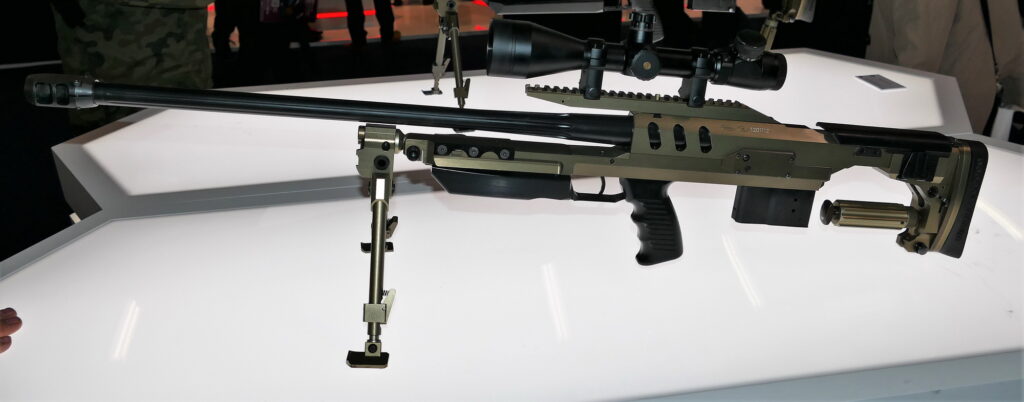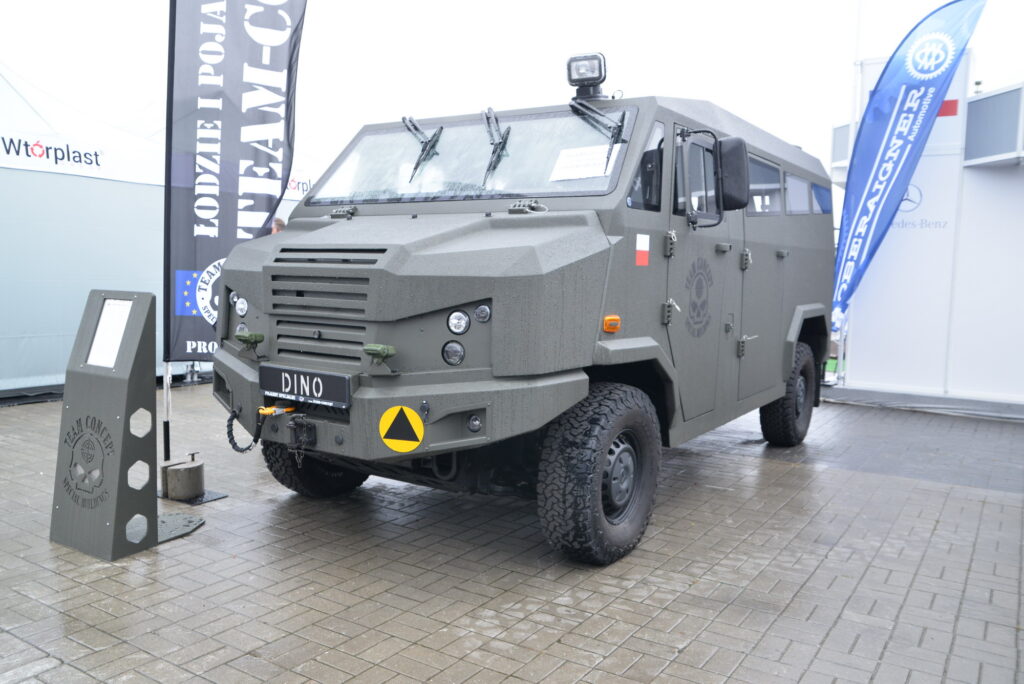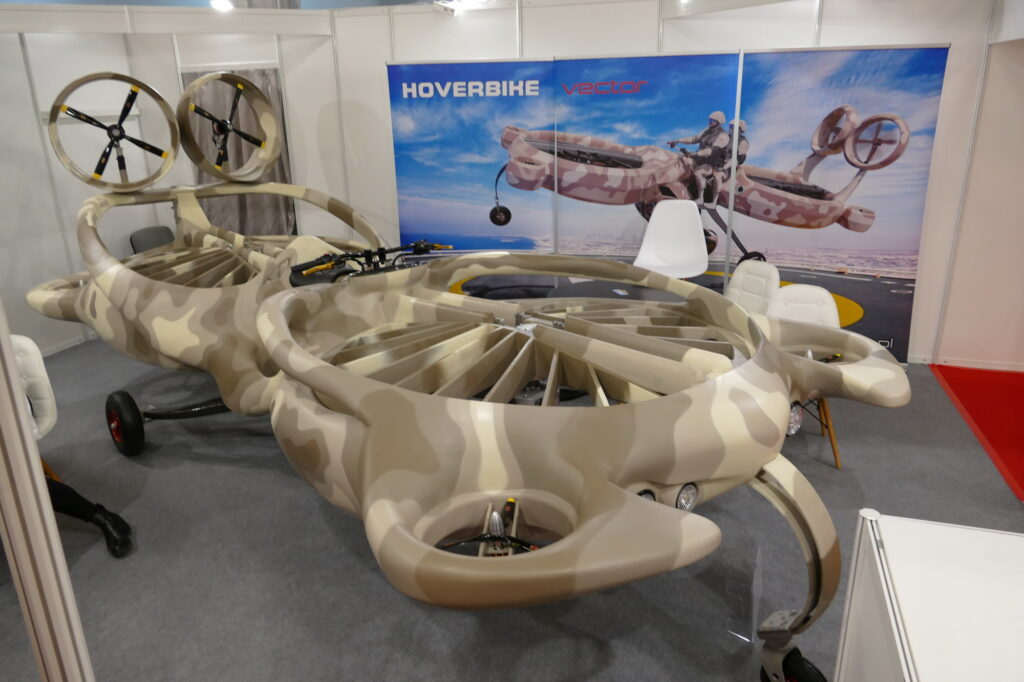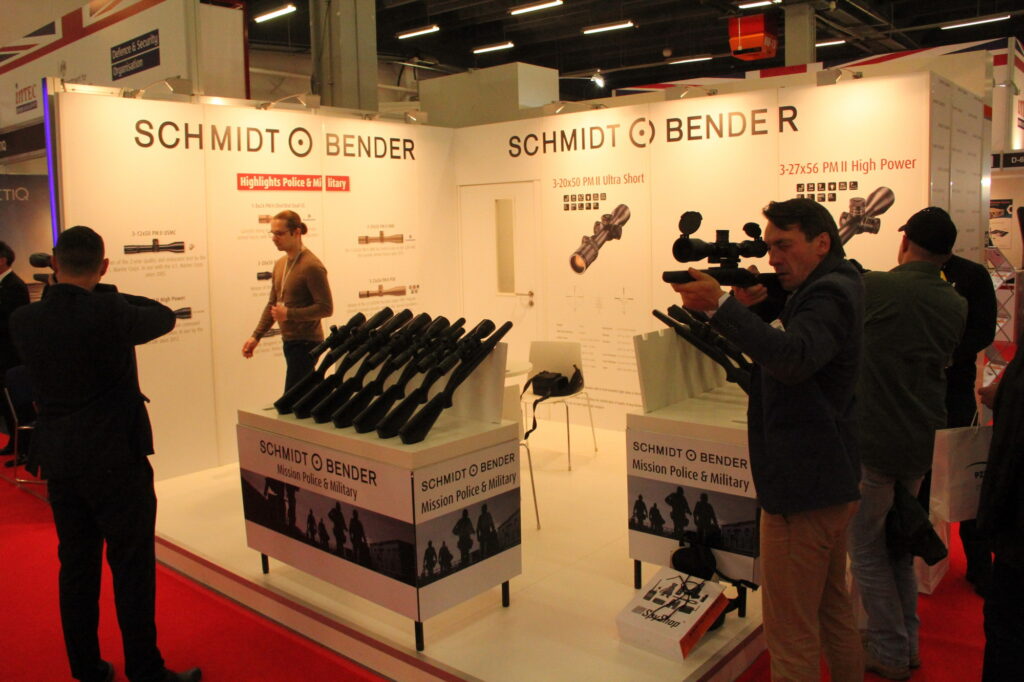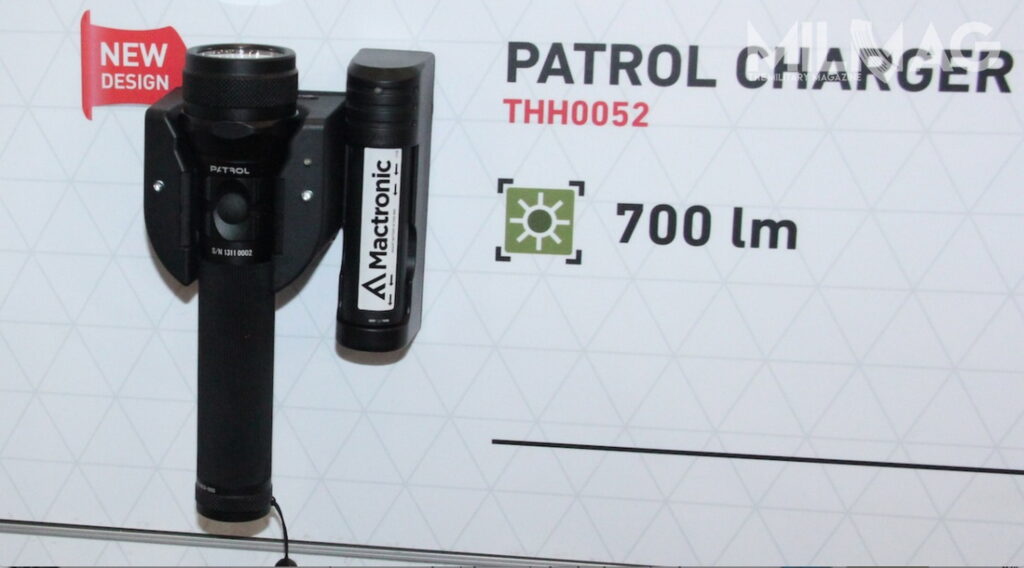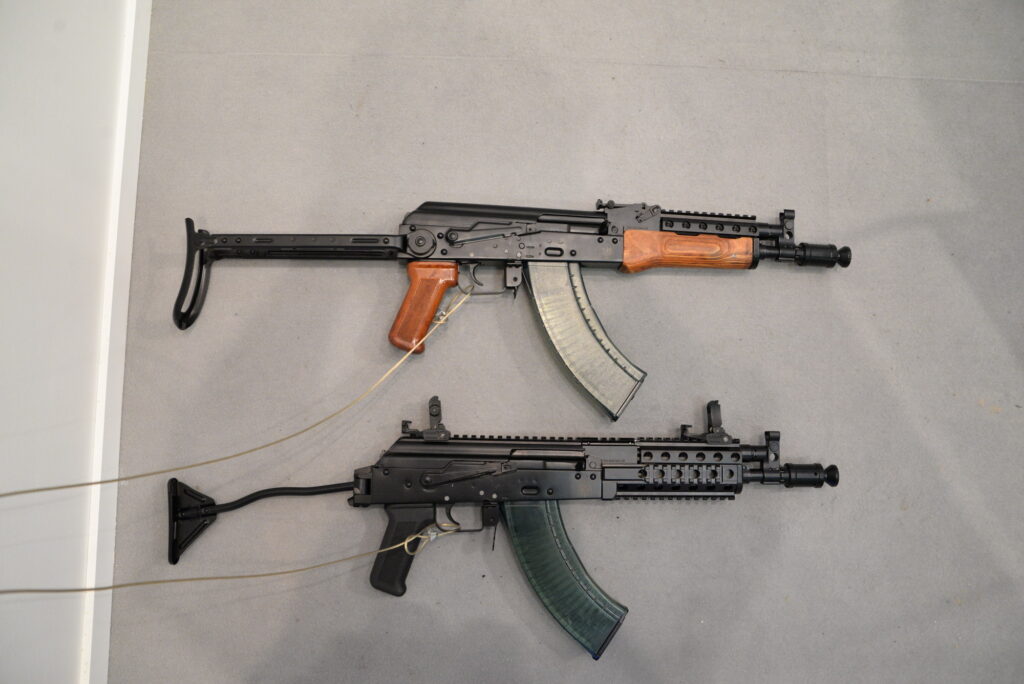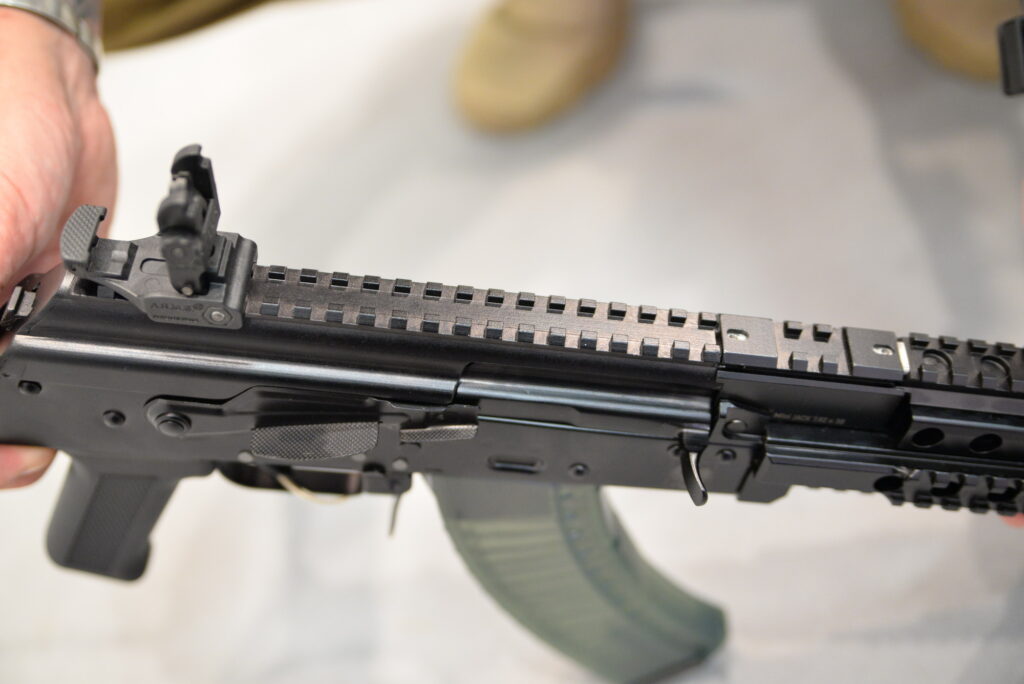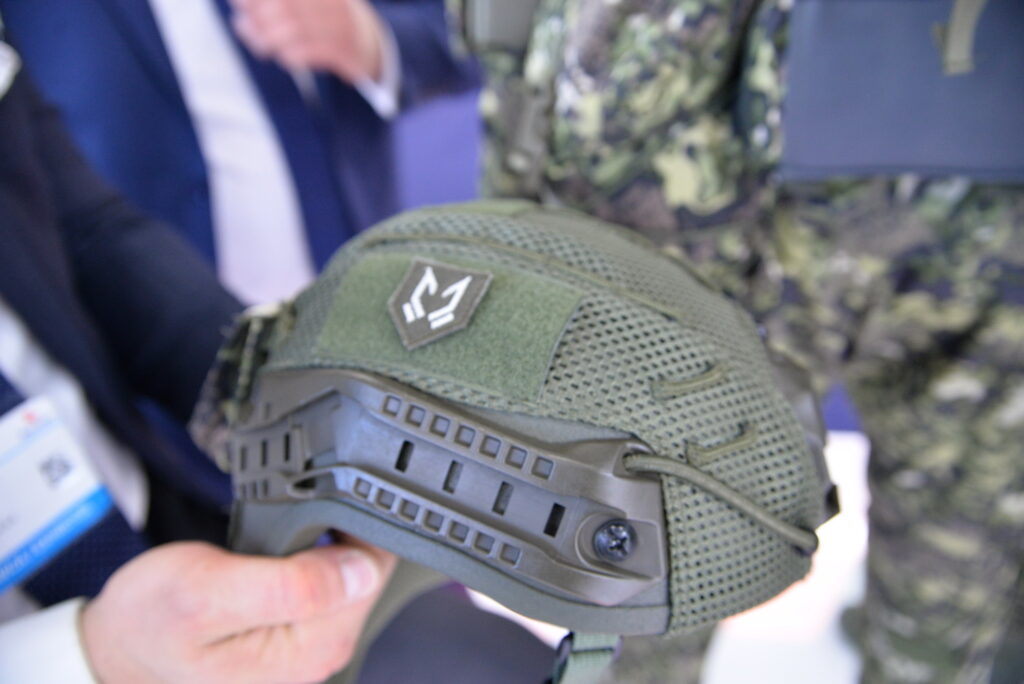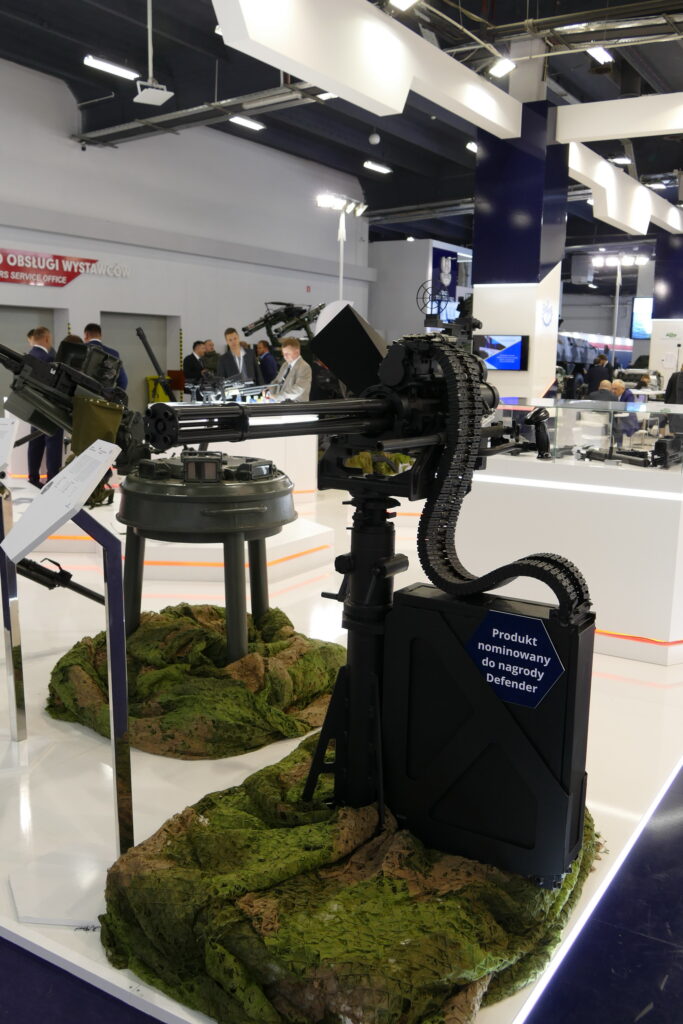History od MSPO is tightly related to the process of changes which occured in Polish armed forces in the last few decades. At MSPO debuted large amount of products that later ended up adopted by Polish army. During MSPO we could heard political declarations regarding acquiring new weapon systems, also in Kielce one could witness signing many contracts for arms acquisition for Polish army. This year’s show gathered 332 exhibitors and 35 thousand guests. MILMAG Military Magazine’s crew has attended the show as media partner of the MSPO.
Borsuk's debut
One of the most important events of the show during MSPO was the presentation of the functional model of the tracked armored personell carrier called Borsuk. It was developed by the consortium lead by Huta Stalowa Wola (HSW), other members of the company are OBRUM, Rosomak, WZE, WZI and WZM. Work was done with the support of the Military Institute of Armor and Automobile Engeneering, Military Technical Academy, Art of War Academy and Warsaw University of Technology. Borsuk is developed as development effort worth 75 million PLN, supported financially by National Center of Research and Development. Vehicle is supposed to be ready for production in 2020-2021.
Borsuk was introduced in Kielce as an APC with the crew of three, and personnel compartment able to fit six soldiers. Vehicle is propelled by 8-cylinder diesel engine MTU 8V199TE20 producing 710 horsepower linked to the Perkins X300 gearbox. Model presented at MSPO was equipped in Remotely Controlled Turret System ZSSW-30 also developed by HSW with cooperation of WB Group. System is armed with ATK Mk 44 Bushmaster 30-mm chain cannon, 7,62-mm UKM-200C machinegun and a Spike LR Dual missile launcher.
Borsuk is planned to replace BWP-1 APC’s and specialised tracked vichicles. Polish Army is estimated to need 1200-1600 new vehicles, half of which are combat variants, among others are self propelled mining vehicles, engeneering models, or medical evacuation variants. In line with military requirements, borsuk in its APC variant will be able to swim. Regarding to that, the vehicle is about to be equipped with modular armor. Estimaded maximum weight of the vehicle in non swimming specialised variants is about 30 tons with 2 ton modernisation reserve. Amphibious version is estimated to weigh 24-25 tons.
T72 Modernisation
One of most important premieres of armored vehicles at MSPO were developed by Zakłady Mechaniczne Bumar-Łabędy demostrators of modernisation technology on T72 tanks still remaining in service in Polish army.
Bumar – part of Polish Armaments Group presented PT-17 – a tank developed in cooperation by Poland and Ukraine. Goal of the developers was that their tank could withstand the challanges of modern battlefield. PT-17 was equipeed with new powerpack basing on S1000R engine with ESM-350M gearbox. Demonstrator stood out with new turret aremd with KBM-2 120-mm smooth-bore main armament developed in Ukraine. Additionally takn was armed with remotely controlled ZSMU-1276 module developed by Zakłady Mechaniczne Tarnów. PT-17 is a complex project, and an expensive one so probably it will be offered at external market.
Secont presented demonstrator, was the PT-91M2. It’s a modernisation package for the PT-91 tank, adapted to financial capabilities of Polish armed forces. As with PT-17, constructors were focusen on enhancing the mobility, firepower, and extending the awareness capabilities of the crew. PT-91M2 was equipped with 850 horsepower S-12U engine. Contrary to PT-17 developers decided to use the existing turret. Enhancement of firepawer is planned to be achieved by using the Slovak 2A46MS cannon. Safran SAVAN-15 fire control systems were used analoglically to PT-91M (export variant solt to Malaysia).
Cyber warfare
At the first day of the exhibition, new company was appointed inside Polish Armaments Group – the QBiTT. Its main task will be monitoring the cyberspace, identifying potential threats, and providing solutions to the armed forces. Agreement signed in presence of government officials is to create system, and informatic solutions used to provide security in the Internet for defense companies an the Ministry of Defence. The cyberspace was acknowledged as the fourth battlefield, after land, air and sea. Appointment of the QBiTT is an another step in building structures, started by earlier signing the agreement between Polish Armaments Group and Exatel – supporting the Polish holding.
Minister of defence declared at MSPO appointment of the Office for Organisiation of Cybernetic Forces. Main task of the office is to create new speciality in Polish army, regarding operations in cyberspace. Poland is to have trained experts able to fight off cyberattacks aimed not only at armed forces but also key defense companies. Last couple years showed that this type of attacks can be equally dangerous, as conventional ones. But, in line with MoD declaration, appointment of the new branch of armed forces is not planned at this time.
Agreements
Usually MSPO is a time when most important agreements for the armed forces regarding arms and equipment are signed. This occurrence got even stronger in last couple years, and in 2017 officials from MoD signed a whole lot of contracts for new equipment.
The biggest one was the contract with Radom Arms Factory for 53 000 Grot C16 FB-M1 rifles worth 500 million PLN, we covered that covered in separate article. The forst formation to get new rifles are Teritiorial Defence Forces (WOT).
Another agreement for small arms was a three-year contract (2017-2019) with Zakładami Mechanicznymi Tarnów (ZMT) for 657 pieces of BOR bullpup sniper rifles, worth 23 980 500 PLN. According to the text should’ve get first 60 rifles until the end of last year, 250 in 2018 and 347 in 2019. Rifles were ordered without additional equipment, so the Armament Inspectorate will have to organize another thread to buy the scopes. So far rifles were coupled with Schmidt & Bender, or Leupold scopes. It’s the fourth time BOR rifles are bought by the armed forces, from 2008 331 were made, also – 40 crossestions.
Another agreement for WOT concerned optoelectronic devices. Singned with PCO contract worth 67 810 000 PLN included 266 night vision binoculars NPL-1M Brom-M and 620 night vision googles MU-3ADM. Other two agreements concerned delivery of airfield device for electromagnetic powering of LUZES V/N airplanes. Device was developed by Wojskowe Centralne Biuro Konstrukcyjno-Technologiczne, and the contract is worth 2 779 140 PLN. Also agreement was signed for 160 sets of mining cascets ISM, willed with MN-123 coating mines. Last shipment is suppose to arrive in 2018, delivered by Bydgoskie Zakłady Elektromechaniczne BELMA for 4 112 000 PLN.
Virus for reconnaissance
Yet another contract worth 90 712 500 PLN concerned the acquisition od 118 far recon vehicles from Viper/Żmija program, which are to be delivered by consortium led by Polish Defense Holding (PHO) and the Concept company. In 2020 reconnaissance regiments should get 25 Virus LPU-4 vehicles, in 2021 another 35, and in 2022 the last 58.
Chosen by MoD winner of the Żmija program Virus LPU-4 (Light Attack Vehicle) automobile is meant to fit 3 recon or SF soldiers. Crew of the Virus consists of the commander, driver and weapons operator. Base version of the vehicle is about 2,6 tons and it can carry additional 900 kilograms. Viper was developed by Team Concept from Bielsko-Biała. LPU-4 has an open body, sited on modified Mitsubishi L200 chassis. Low mass was achieved by using aramid plates bolted to chromium-molybdenum steel cage. The floor is made of polymer material, and provides class 1 protection in STANAG 4569 annex B standard.
Viper is powered by 2,4 liter, 180 horsepower diesel engine with 430 Nm of torque. Obviously it has 4×4 drive with central differential, reducer, and three diff-locks. Range of the LPU-4 is 1200 km, when 2/3 of the travel is on-road, and 1/3 off-road. Virus is capable of drivinf at 140 km/h on asphalt road, and 100 km/h off-road. Vehicle can be transported by air, except for 2 machineguns, turret can be equipped with anti-armor missile launcher, or light anti-aircraft milissle launcher. Instead of the armament, Virus can be equipped with optoelectronic pod. Producer informed that the 81-mm mortar carrier version of Virus is being developed.
Czech-Polish Huzar
During this year’s MSPO, guests were drawn to booth of H. Cegielski-Poznań (HCP). After many years company returned to the defense market, from which it resigned in early 2000s directing itself to civilian clients. HCP presented the Husar vehicle, which can be offered to Polish army within the Pegaz Multipurpose Special Forces Vehicle Program (WPWS). Vehicle is made by Czech Tatra company based on 4×4 chassis owned by HCP. Representants of HCP count on the possibility, that when the armed forces decide to acquire their vehicles, most of the production process is going to happen in Polnad.
Husar weighs 13,5 tons and can fit 6 soldiers or 1600 kg of cargo. It’s propelled by 6,5-liter, 285 horsepower engine. Armored cabin provides class 3 ballistic protection, and 2a/2b protection against mines, according to STANAG 4569. Vehicle can be armed with remotely controlled modules with 7,62-mm, 12,5-mm machineguns, or 40-mm automatic grenade launchers.
Hoverbike
In Kielce guest could see the Hoverbike vehicle, designed by Skynamo Aerospace. It’s unusual in shape, and propelled by four rotors. It can transport personell and cargo by hovering above ground. Heverbike can be used in places where traditional transportation like off road cars, quads, or even helicopters cannot get. Designers mean mostly urban areas, or mountains.
Vehicle has a frame made of composite carbon-epoxy material, rested on an elastic composite chassis that is supposed to withstand 10 G. Hoverbike can be also used as an unmanned aircraft. In such configuration in the future it could be used as MEDEVAC or resupply vehicle.
Delta Optical Stryker HD
Another premiere at MSPO had the Stryker HD scope by Polish company Delta Optical. It’s a variation of the Titanium 4,5-30×56 HD SFP model. It main characteristic is the use of high quality optical parts based on surówce z niskodyspersyjnego ED glass. Components like that are supposed to provide high contrast view in low light conditions. Producer succesfully shortened the sight to 365 mm with the 34 mm tube. Compact construction allows the sight to be fixed to relatively short rails, but allowing for a high adjustment capability – up to 3m vertically. Producer decided to use a retucle with illuminated center point in first focal plane.
Schmidt & Bender
German Schmidt & Bender exhibited their products in Kielce. For many years this producer of optical sights is the biggest supplier of optical sights for Polish military, police, and border guard. Sights from Police Marssman II (PM II) lineare the most often used devices on Polish bolt action DMRs.
About the fact that Schmidt & Bender treats the Polish market seriously, can witness not only their presence at MSPO, but also opening their HQ in Warsaw. Germans decided to give up on a central distributor in Poland and build the web of cooperating stores all across Poland.
Patrol Charger +
At MSPO a developmental version of Patrol model was presented, Patrol is one of the most popular products of Mactronic. Patrol Charger+ is not onluy a very popular flashlight in law enforcement, but a whole system consisting a charging device that doubles as a holder, and an additional piece that lets the user charge the spare battery. The charging device/holder can be mounted indoor or in a vehicle. After pluging in the charging device via mini-jack or micro-USB, contacts located in flashlight’s body allow for charging a replacement battery. Such ability causes the user to have a reliable source of light at any time. When the battery goes dry, the charger has built in LEDs allowing for quick location of the power source even in complete darkness.
Mini Jack Premiere
Wytwórnia Broni Jacek Popiński (Jacek Popiński Arms Mfg./WBP) Rogów presented at MSPO the shortened variant of their semi-automatic Jack rifle. New model is called Mini Jack and it’s equipped with 259-mm barrel. Two versions of Mini Jack were shown in Kielce – first one with Picatinny rail on the gas tube, wood handguard and underfolder stock. Second example had a top cover with an integrated Picatinny rail, gas tube and handguard were replaced with a two piece quad-rail. Top cover and gas tube rails were oriented in line on the same level. Second carabine had no rear sight, it’s base was replaced with a piece of Picatinny, serving double duty as the top cover locking piece. Mini Jack in this variant was equipped with a side folding stock mounted similarly to Tantal rifles.
MILMAG was assured by WBP representative, that the reciever was made in a way that allows, mounting of any AK pattern stock, and any M4 type stock by using an adapter.
Most interesting is the railed top cover, equipped with springs that make sure it stays straight. WBP representatives say that the iron or optical sights mounted on the rail will hold zero. Fitting is precise enough, so removing the top cover for cleaning or maintenance doesn’t cause the point of impact to move.
Dromader System
Designers from Maskpol prepared for MSPO, the project of Integrated Arms and Equipment Bearing System (ZSPUiW) called Dromader, designed for light infantry. System was displayed in MAPA camouflage, license for which Maskpol bought from its creator – Maciej Dojlitko. Camouflage pattern will compete with Leopard camo (in several variations) in the series of trials that will take place in mid-2018. Trials will determine which camouflage pattern will replace currently used, and considered obsolete Pantera pattern.
Project itself is inspired by the solutions of top brands, both ergonomically and design-wise. Designers based their project on modern equipment used by special forces. Despite that all of the element are in early developmental stage, we can see a lot of interesting solutions, atypical for the eqipment udef by Polish armed forces. One of interesting solutions is the ballistic protection used in the system, soft armor panels sawn into the plate carrier and battle belt. PC was adapted for shooter’s cut hard armor plated instead of standard SAPI. It should make it easier to aim, and maintain steady shooting position. Additionally designers left the room for side armor plates covering the wearer up to the armpits. All ballistic inserts are produced by Maskpol in-house, for Dromader project. According to the producer, inserts will provide sufficient protection against shrapnel and small-arms fire, while maintaining the good mobility at the same time. Specific parameters were not disclosed – armor ramains in development.
Plate Carrier was made of 770D Cordura nylon material, lined with aramid backig. Project takes into account the TCCC (Tactical Combat Casualty Care) guidelines. When the user or the medic undoes the shoulder velcro strap, and yanks the strap attached to the waist – the vest comes off effortlessly. On the contrary to the quick relase systems it can be quickly put back together without tedious playing with cables holding together all the components.
Pouches are inspired by new Maskpol logo disclosed at MSPO, the flaps get slimer down to the end, but other than two examples are not very different that the ones used in Polish army. First example is the pouch made for tourniquet, medical shears , and gloves. Other one is a quick access IFAK held in a horizontal sleeve by a velcro patch, and accessible from both sides, by yanking one of two loops.
Another interesting element of Dromader system is HP-05 helmet, cut in a way that doesn’t obstruct the use of active hearing protection. It’s equipped with side rails, and a nightvision arm socket. It was coupled with a cover made with poliamid net with a counterweight pouch with a divider for two inserts allowing to adjust the weight to the mass of the nightvision device.
Defender awards
MSPO in Kielce, as every year was finished with an award ceremony for the best products. Among the most important awards are: Republic of Poland Presidental Award, Deefender Awards, and special awards from individual govt. departaments.
President awarded the Military Institute of Communication for IP-Krypto device, along with cryptographic data generation and redistribution stations, and the programming for planning, management, and monitoring. Minister of Defence Award was granted to Zakłady Mechaniczne Tarnów (ZMT) for 12,7-mm WLKM chain cannon. Weapon was already evaluated by the Polish navy, as the defense weapon against small vessels.


